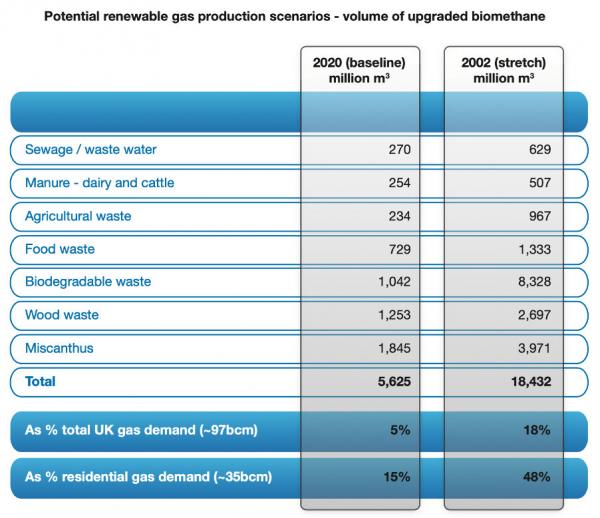National Grid and Ernst & Young concluded that:
Renewable gas has the potential to make a significant contribution to the UK’s renewable energy and carbon reduction targets for 2020. And in the longer term, with the right government policies in place, renewable gas could meet up to 50% of UK residential gas demand.
In terms of the cost to the UK of delivering renewable gas, it is estimated that the marginal cost… would be in the region of £10bn. This cost compares well with the likely cost of delivering other large scale renewables such as wind. The unit cost of renewable gas would be of a similar level to the cost of other sources of renewable energy which are currently supported with subsidies.
They petitioned for the following policy measures:
◆ A commercial incentive for renewable gas producers to upgrade and grid-inject their gas rather than generate electricity which is currently incentivised under the RO scheme despite being a generally much less efficient use of the valuable waste stream;
◆ A comprehensive waste management policy for the UK to ensure that each waste stream is directed to the most appropriate technology to maximise energy recovery and recycling
◆ A regulatory framework to provide incentives and to clarify the roles and responsibilities of the gas transporters with respect to renewable gas connections;
◆ Continued support for R&D in renewable gas production and upgrade technologies.
And they highlighted that the purpose of the report was to persuade the government to reduce its expectations of other technologies:
Renewable gas…is a unique, large scale solution which unlike other options such as district heating and heat pumps utilises existing heat infrastructure (i.e. gas grids) already largely paid for by the consumer. So renewable gas does not require consumers to find the money for new heating installations in the home and also avoids the disruptive road works that would be required to build more network infrastructure.
There was nothing subtle about the rent-seeking. Nor was there much credible analysis underpinning it.
The core of their claims was an analysis of the resource, which claimed much larger numbers than previous research. The biggest factor in this was the inclusion of gasification gas as well as digester gas, as this allowed them to count feedstocks that could not realistically be converted to gas by AD. In the table below, the last two items were intended for gasification. But they also upgraded significantly the claimed potential for biogas.
The “Baseline” scenario considers a world where a significant proportion of waste still goes to landfill, is not sorted appropriately or is still used for electricity generation – rather than being used for renewable gas production. The “Stretch” scenario aims to see what could be achieved with renewable gas if policies are put in place to ensure that all waste is directed towards renewable gas production and that the most appropriate (high yielding) technology is used for each type of waste.
How does this compare with reality?

